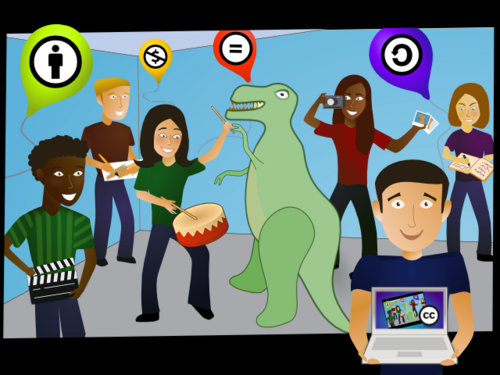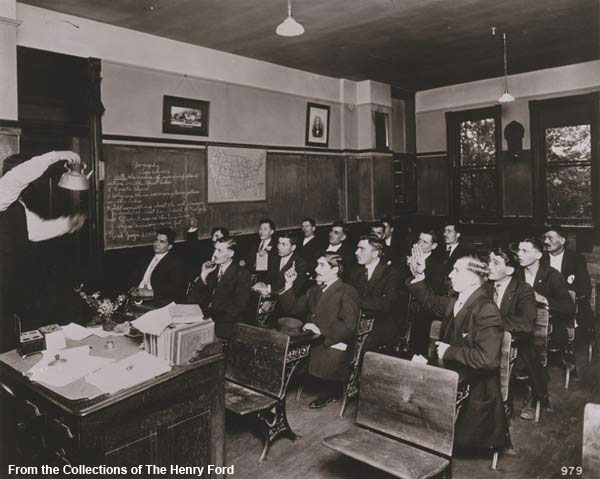 Dan Hickey's recent post on seeding, feeding, and weeding educators' networks got me thinking, for lots of reasons--not least of which being that I will most likely be one of the research assistants he explains will “work with lead educators to identify interesting and engaging online activities for their students.”
Dan Hickey's recent post on seeding, feeding, and weeding educators' networks got me thinking, for lots of reasons--not least of which being that I will most likely be one of the research assistants he explains will “work with lead educators to identify interesting and engaging online activities for their students.”This got me a-planning. I started thinking about how I would seed, feed, and weed a social network if (when) given the chance to do so. As David Armano, the author of "Debunking Social Media Myths, the article that suggests the seeding, feeding, and weeding metaphor, points out, building a social media network is more difficult than people think—this is not a “if we build it, they will come” sort of thing. Designing, promoting, and growing a community takes a lot of work. People will, given the right motives, participate in the community for love and for free, but you have to start out on the right foot. This means offering them the right motivations for giving up time they would otherwise be spending on something else.
A caveat
First, know that I am a True Believer. I have deep faith in the transformative potential of participatory media, not because I see it as a panacea to all of our problems but because participatory media supports disruption of the status quo. A public that primarily consumes media primarily gets the world the media producers decide they want to offer. A public that produces and circulates media expressions gets to help decide what world it wants.
Social media, because of its disruptive and transformative potential, is both essential and nigh on impossible to get into the classroom. This is precisely why it needs to happen, and the sooner it happens, the better.
But integrating participatory media and the participatory practices they support into the field of education is not a simple matter. Too often people push for introduction of new technologies or practices (blogging, wikis, chatrooms and forums) without considering the dispositions required to use them in participatory ways. A blog can easily be used as an online paper submission tool; leveraging its neatest affordances--access to a broad, engaged public, joining a web of interconnected arguments and ideas, offering entrance into a community of bloggers--takes more effort and different, often more time-consuming, approaches.
Additionally, while social networks for educators hold a great deal of promise for supporting the spread of educational practices, designing, building, and supporting a vibrant community of educators requires thinking beyond the chosen technology itself.
Five Tips for Seeding and Feeding your Community
With these points in mind, I offer my first shot at strategies for seeding and beginning to feed a participatory educational community. (Weeding, the best part of the endeavor, comes later, once my tactics have proven to work.)
1. Think beyond the classroom setting.
In the recently published National Writing Project book, Teaching the New Writing, the editors point out that for teachers to integrate new media technologies into their classrooms, they "need to be given time to investigate and use technology themselves, personally and professionally, so that they can themselves assess the ways that these tools can enhance a given curricular unit."
The emerging new media landscape offers more than just teaching tools--it offers a new way of thinking about communication, expression, and circulation of ideas. We would do well to remember this as we devise strategies for getting teachers involved in educational communities online. After all, asking a teacher who's never engaged with social media to use it in the classroom is like asking a teacher who's never used the quadratic equation to teach Algebra.
Anyone who knows me knows what a fan of blogging I am. I proselytize, prod, and shame people into blogging--though, again, not because I think blogging is the best new practice or even necessarily the most enjoyable one. Blogging is just one type of practice among a constellation of tools and practices being adopted by cutting edge educators, scholars, and Big Thinkers across all disciplines. Blogging was, for me, a way in to these practices and tools, and I do think blogging is one of the most accessible new practice for teacherly / writerly types. The immediacy and publicness of a blogpost is a nice preparation for increased engagement with what Clay Shirky calls the “publish, then filter” model of participatory media. This is a chaotic, disconcerting, and confusing model in comparison to the traditional “filter, then publish” model, but getting in synch with this key element of participatory culture is absolutely essential for engaging with features like hyperlinking, directing traffic, and identifying and writing for a public. In a larger sense, connecting with the publish, then filter approach prepares participants to join the larger social networking community.
2. Cover all your bases--and stop thinking locally
One of the neatest things about an increasingly networked global community is that we're no longer limited to the experts or expertises of the people who are within our physical reach. Increasingly, we can tap into the knowledge and interests of like-minded folks as we work to seed a new community.
Backing up a step: It helps, in the beginning for sure but even more so as a tiny community grows into a small, then medium-sized, group, to consider all of the knowledge, experience, and expertises you would like to see represented in your educational community. This may include expertise with a variety of social media platforms, experience in subject areas or in fields outside of teaching, and various amounts of experience within the field of education.
3. In covering your bases, make sure there's something for everyone to do.
Especially in the beginning, people participate when they feel like they a.) have something they think is worth saying, b.) feel that their contributions matter to others, and c.) can easily see how and where to contribute. I have been a member of forums where everybody has basically the same background and areas of expertise; these forums usually start out vibrant, then descend into one or two heavily populated discussion groups (usually complaining or commiserating about one issue that gets up in everyone's craw) before petering out.
Now imagine you have two teachers who have decided to introduce a Wikipedia-editing exercise into their classrooms by focusing on the Wikipedia entry for Moby-Dick. Imagine you have a couple of Wikipedians in your network who have extensive experience working with the formatting code required for editing; and you have a scholar who has published a book on Moby-Dick. This community has the potential for a rich dialogue that supports increasing the expertise of everybody involved. Everybody feels valued, everybody feels enriched, and everybody feels interested in contributing and learning.
4. Use the tool yourself, and interact with absolutely everybody.
Caterina Fake, the founder of Flickr, says that she decided to greet the first ten thousand Flickr users personally. Assuming ten thousand users is several thousand more than you want in your community, you might have the time to imitate Fake's example. It also helps to join in on forums and other discussions, especially if one emerges from the users themselves. Students are not the only people who respond well to feeling like someone's listening.
Use the tool. Use the tool. Use the tool. I can't emphasize enough how important this is. You should use it for at least one purpose other than seeding and feeding your community. You should be familiar enough with it to be able to answer most questions and do some troubleshooting when necessary. You should be able to integrate new features when they become available and relevant, and you should offer a means for other users to do the same.
5. Pick a tool that supports the needs of your intended community, and then use the technology's features as they were designed to be used.
Though I put this point last, it's the most important of all. You can't--you cannot--build the right community with the wrong tools. Too often, community designers hone in on a tool they have some familiarity with or, even worse, a tool that they've heard a lot about. This is the wrong tack.
What you need to do is figure out what you want your community to do first, then seek out a tool that supports those practices. If you want your community to refine an already-established set of definitions, approaches, or pedagogical tenets, then what you're looking for is a wiki. If you want the community to discuss key issues that come up in the classroom, you want a forum or chat function. If you want them to share and comment on lesson plans, you need a blog or similar text editing function.
Once you've decided on the functions you want, you need to stick with using them as god intended. Do not use a wiki to post information that doesn't need community input. Don't use a forum as a calendar. And don't use a blog for forum discussions.
It's not easy to start and build a community, offline or online. It takes time and energy and a high resistance to disappointment and exhaustion. But as anybody who's ever tried and failed (or succeeded) to start up a community knows, we wouldn't bother if we didn't think it was worth the effort.


















